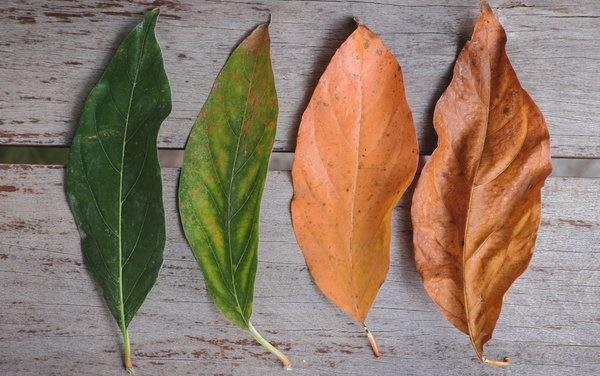How a skin therapy specialist achieves visible results

After working in advertising for nearly twenty years I decided to make a change by packing in a highly successful career and going back to University. After studying a few podiatry papers I realised a more “hands-on” approach with people was for me and sought to find a career with more of a feel-good factor. This led me into holistic therapies and after studying for another two years I started working as a beauty therapist in a Spa environment.
After a short while I found I needed to develop my skills further and moved to a beauty therapy clinic. Here I could focus on learning more about skin anatomy and problems with skin, and treating these problems with contemporary therapies while learning more and practicing the latest treatments.
Passionate and knowledgeable about skin treatment
I joined Palm Clinic in October 2011, working alongside the doctors and nurses who are as passionate about skin treatment as I am. In my role here I am committed to building caring relationships with my clients, helping them achieve real, tangible results and communicating with them in a simple, non-technical way.
Skin changes over time, and quicker than people realise
My clients understand that there isn’t a “one size fits all” treatment. What works for one person may not work for another and as such different tactics and treatments are used for each individual. That’s why when you have your first consultation with me it lasts for a good hour. This way I get to know you and it gives me a sense of what’s going on with the health of your skin and how to treat it.
I am very aware that science plays a significant role in the development of the latest skin treatments and I am therefore passionate about making sure I am up to date with the latest innovations in this industry.
Making the time to spend on training helps me to better understand the attributes and applications of the latest treatments and it is only those new products with clinically proven efficacy that make it onto my recommendation list. If I am going to recommend it, suppliers must first convince me that it’s safe and that it works.
“It’s this personal, holistic touch that allows our patients to trust us here at Palm Clinic. Our clients know that we’re not trying to sell them something, we’re trying to treat them. There are so many treatments and practices out there in the industry that simply don’t work, or are aimed at a broad, generic audience. We deliver the personal touch at Palm Clinic, working alongside you, to find a treatment that brings results.”
So what’s the one piece of advice I would give above all others?
Use sunblock – it’s the key
Prevention is the best strategy for ageing skins. Using a sun protection every day will help prevent damage to your skin and assist with maintaining good skin health.
Effective sun protection is your number one defense against ageing!
What is ageing?
The change or deterioration of cells, body functions and the skin over time due to environmental conditions and the chronological passing of time.
Pollution, gravity, repetitive muscle movements, sleeping position, smoking and UV exposure are all environmental factors that age the skin.
The principal etiologic factor of premature skin ageing is UVA. Unlike UVB, UVA is not dependent on the time of day or season and is able to penetrate through clouds and window glass. Up to 90% of visible skin changes attributed to ageing are caused by sun exposure. Everybody, regardless of race or ethnicity is vulnerable.
We’re right under the hole in the ozone layer and even on a cold winter’s day, you still need to protect your skin from UVA. Incredibly, because of that hole Kiwis age ten years faster than Europeans!
The most dangerous period for UV rays is between 10am and 3pm – these are the hours when skin damage can occur the fastest. Even on a cloud-free day you can get skin damage from ultraviolet rays as the levels are not related to the air temperature and on cool days the UV rays will still reach the Earth’s surface.
What are sunscreens?
Sunscreens absorb, reflect or scatter the sun’s rays on the skin. Broad spectrum reflects both UVA and UVB rays. You can purchase ointments, creams, gels, lotions and sprays all labeled with a sun protection factor. SPF 15 gives 94% protection, SPF 30 will provide 97% protection. No SPF gives complete coverage against the sun’s rays.
Sun protection differences
Different sunscreen ingredients prevent different wavelengths of light from reaching the skin. Chemical (organic) and physical (inorganic) sun protection ingredients deflect the sun’s rays and appear to be safe as well as effective.
Here’s a good way to remember the different UV rays
UVA – this strands for ultraviolet A or you can think about it more easily as ‘ageing rays” because they cause long term skin damage, premature ageing, wrinkles and sun spots. UVA is the deeper ultraviolet ray, the one that goes into the dermal layer of your skin so it pays to get into a habit of using a SPF moisturiser every day, no matter what time of year.
UVB – this stands for ultraviolet B and is referred to as “burning rays” as they cause sunburn. Unlike UVA they have different strengths throughout the year. UVB are the most common cause of skin cancers.
UVC – stands for ultraviolet C – this is the strongest and deadliest of solar rays and the ozone layer prevents these rays from reaching the Earth. However, research has provided evidence that the ozone layer is being depleted and this means the surface of the Earth is more exposed giving us cause to be doubly concerned.
Largest organ in your body
Your skin is the largest organ in your body and needs to be treated right. Recently, gut-health has become a big issue in the industry, with the idea that taking probiotics and supplements can give you a healthier skin. While it’s true a good diet is important, when we apply topical active ingredients to the source (our skin) it’s a more direct and effective way to protect the skin.
Vitamins for your skin
A Vitamin C ointment is great for the skin. Vitamin C gives anti-oxidant protection, which helps against environmental factors such as pollution and sunlight. Vitamin A helps cells communicate with each other, helping cells turnover rate, slowing the ageing process.
I have a holistic approach towards my clients’ treatments and thanks to my years of experience and my in-depth knowledge of the industry I am able to help.
If you would like to know more, book a consultation today and let’s see how I can assist you to do the very best for your skin here at Palm Clinic.




